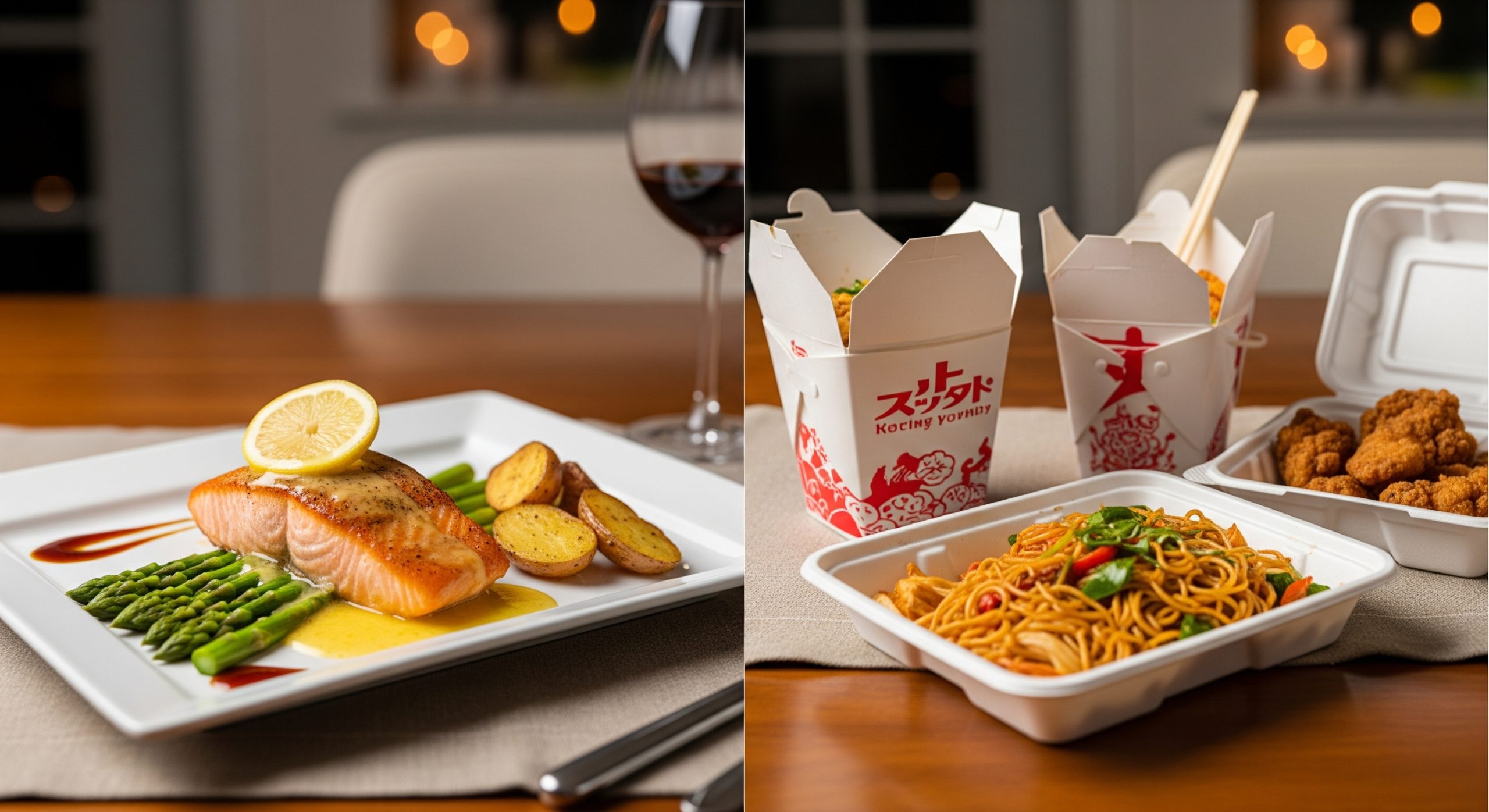
Restaurant-Quality Meals at Home: How Precooked Gourmet Options Compare to Takeout
Let’s be honest – we’ve all been there. It’s 6 PM on a Tuesday, you’re exhausted from work, and the last thing you want to
Cart
No products in the cart.
HOLIDAY SALE ENDS IN
Black Friday Sale: Save up to $30. Shop our Black Friday Sale.
You may have heard the expression “old age doesn’t come alone”. The Coronavirus is not unlike old age in the sense that it has brought with it a heap of household baggage in terms of its impact on our grocery expenditure and eating habits. Never has there been a time since World War 2 when as a nation we have given so much thought to planning what we are going to eat, where we are going to source our food and how much we are going to spend on food – after of course we have reassured ourselves that we have enough toilet paper in the house. Frozen food is occupying a bigger part of our grocery budget in the quest to combat empty shelves at the grocery store by planning ahead and frozen prepared meal delivery services such as EatFlavorly are becoming a household staple.
Covid-19 has changed the way that we shop for food, making us more conscious and discerning about what we buy. Suddenly, we feel the urge to fill our freezers because we aren’t entirely sure how readily available fresh ingredients will be when we need them. We have a lot to thank Clarence Birdseye for, who in the 1920’s took note of how indigenous Canadians ‘flash froze’ their fish and forever changed the way Americans ate by developing a quick, freezing process that launched the modern frozen-food industry. In the 1940’s his innovations in freezing technology helped spur the demand for frozen refrigerators and soon the number of Americans with refrigerators jumped from less than 10% to well over 50%.

Careful meal planning has become a necessity and demand has increased for meal delivery in the absence of restaurant dining. Families are searching for catering solutions that are convenient, satisfying and cost-effective. Frozen prepared meals provide an attractive alternative to cooking from scratch but can we cater for everyone’s dietary needs – Keto, Low Carb, Low Sodium, etc – and is there a limit on how much frozen food we should be eating in general and what safety guidelines should we pay attention to?
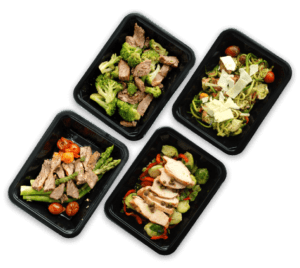 According to Caleb Backe, Health and Wellness Expert for Maple Holistics, packaged frozen fruits and vegetables often have as many, if not more, nutrients than their fresh counterparts because they are flash frozen soon after harvesting. A little-known fact is how quickly fresh produce loses its nutrient value after harvest. University of California studies show that vegetables can lose 15 to 55 percent of vitamin C within a week and some spinach can lose 90 percent within the first 24 hours after harvest. Another unfortunate characteristic of fresh vegetables is that they are often sprayed with chemicals to extend shelf life whereas freezing serves as a natural, chemical-free preservative. Frozen meat is another example, retaining its freshness intact without the need for food additives such as coloring, BHT, potassium sorbate or sodium benzoate. Enjoy all the following benefits of frozen food:
According to Caleb Backe, Health and Wellness Expert for Maple Holistics, packaged frozen fruits and vegetables often have as many, if not more, nutrients than their fresh counterparts because they are flash frozen soon after harvesting. A little-known fact is how quickly fresh produce loses its nutrient value after harvest. University of California studies show that vegetables can lose 15 to 55 percent of vitamin C within a week and some spinach can lose 90 percent within the first 24 hours after harvest. Another unfortunate characteristic of fresh vegetables is that they are often sprayed with chemicals to extend shelf life whereas freezing serves as a natural, chemical-free preservative. Frozen meat is another example, retaining its freshness intact without the need for food additives such as coloring, BHT, potassium sorbate or sodium benzoate. Enjoy all the following benefits of frozen food:
Flash-freezing food prevents spoilage when food is frozen during peak ripeness. Food is frozen at very low temperatures with cold, circulating air, keeping ice crystals small. This prevents loss of moisture during the defrosting period. This freeze takes place a few hours post-harvest to deliver maximum freshness.
Freezing is a natural form of preservation whereas fresh produce often has chemicals sprayed to stabilize and extend shelf life in the store and meats often contain a number of artificial preservatives in order to extend their use-by date.
Thanks to the same freezing technology that ensures freshness, frozen foods may be more nutrient-rich than fresh products. Fresh produce is subject to oxidation. This ripens food and causes it to degrade whereas freezing food protects it from oxidation.
Frozen food is generally less expensive than its fresh equivalent and significantly less expensive than restaurant delivery. Moreover, choosing frozen over fresh can also help reduce the grocery bill by consuming individual portions and saving the rest for later.
Frozen meat, vegetables and prepared entrees often come packaged in single portion sizes which are labeled with nutritional values. This makes calorie counting and nutritional tracking easy and convenient and lends itself to supporting healthy weight management.
Frozen produce is picked at its peak ripeness during summer months when fruit and vegetables are nutrient dense. This locks in the foods’ high nutrient content for consumption year-round.
For those short on time or cooking skills many frozen foods can be prepared in less than 15 minutes. Fruits and vegetables are peeled and cut, and frozen meats are usually individually packaged and trimmed for quick preparation – most cooking methods are simple and fast.
The FoodKeeper app is a super handy tool that gives timelines for freshness and quality of foods stored in the refrigerator and freezer. TODAY Health also has guidelines for how long you can freeze different foods. Note that freezing does not kill bacteria and other pathogens, but it does slow down growth.
Keep your freezer at 0°F (-18°C) or less. All freezers should have a star rating per the manufacturer’s handbook. How long you can store frozen food depends on the freezer’s rating, which ranges from 1-star to 4-star. The higher the rating, the colder the freezer and the longer you can store food safely. A 4-star rating means you can safely store food for up to 12 months. Lower ratings are for short-term storage only.
Keep food at a safe temperature during thawing by defrosting safely in the refrigerator, microwave or cold water but never on the countertop. After thawing meat, poultry and fish, consume within three days. Eat large cuts of red meat or roasts within five days.
Refreeze food safely by thawing in the refrigerator, keeping cold at 40°F (4°C) or below and consuming within the thaw-and-eat window. If ice crystals have formed on food then this is usually a sign that its temperature has risen above 40°F (4°C) and refrozen. This food will develop an off flavor and icy texture.
Depending on the star rating of your freezer, you may enjoy frozen fresh, whole roasts, steaks and whole poultry potentially for up to a year although the freezer life of cubed or chopped meat drops to 4-6 months at most. Other meats such as sausage lose quality after just 2 months. Salad greens, mayonnaise and eggs do not freeze well. Milk and cheese may change in consistency and taste after freezing. EatFlavorly frozen meals will stay fresh in the freezer for at least one month.
If there is a power cut, freezer contents may still be safe to eat within 2 days by checking the condition and temperature of the freezer contents after power is restored. If food is partly frozen and still has ice crystals, then it is usually safe to refreeze or consume. However, discard food that has been warmer than 41°F (5°C) for more than 2 hours and do not taste it to determine viability as it may be unsafe.
If you only learn one new skill during the Covid-19 era, let it be how to flash freeze your meat and produce! Flash freezing allows you to freeze items at the peak of freshness and later scoop out individual or family-size portions, so you don’t have to defrost a whole bag. Follow these steps:
1: Dice meat, vegetables or fruit. Group into portion sizes
2: Place the portions on a flat baking tray lined with waxed paper
3: Freeze the sheet for one to two hours
4: Transfer frozen food to freezer bags taking out all the air and return to the freezer.
If this all sounds like too much work then try EatFlavorly for a nutrient-dense, prepared meal delivery service.
Cool foods before you freeze them.
Mark the date because frozen food is often unrecognizable. Label and date packaging with a black permanent marker in order to identify contents more easily.
Use bags to save space. For example, store meat, fruit, vegetables, soups and sauces in upright freezer bags. Lay partially filled bags flat in the freezer leaving ¼ to ½ inch of space since frozen food expands.
Organize for easy access. Put items you use frequently on their own shelves and if you have a tendency to pick up fast food on days you don’t feel like cooking, designate a shelf to stash ready-to-eat meals.
Do not overload the freezer with unfrozen food as it slows down the freezing rate and may affect the quality. Add only the amount that will freeze within 24 hours. This is usually 2 or 3 pounds of food per cubic foot of storage space.
Rotate regularly using the “first in, first out” rule. For example, replenish your freezer by storing newer purchases behind older ones.
Conserve energy by filling your freezer. Consequently, if the power goes out your food will stay frozen longer.
Avoid temperature fluctuations to minimize freezer burn. Close the freezer door firmly and wrap products well in airtight packaging.
EatFlavorly’s neatly-packaged, freezer-friendly meals can be stacked vertically or horizontally to optimize your freezer storage space. We invite you to explore our menu and try out some delicious recipes that you may not have discovered before.
Merchandise Warehouse “Surprising benefits of frozen foods”, December 2019
Green Isle Foods “Managing your freezer” www.greenislefoods.ie
Insider.com “6 surprising reasons frozen food is good for you”, June 2018
Food & Nutrition “5 reasons you should be eating frozen food”, March 2015
Restaurant Supply “Advantages of using frozen food”, March 2015
Today Food “10 frozen food safety myths debunked”, October 2017
Chicago Tribune/dining, July 2013
The History Channel “History of Frozen Food”, Elizabeth Nix

Let’s be honest – we’ve all been there. It’s 6 PM on a Tuesday, you’re exhausted from work, and the last thing you want to
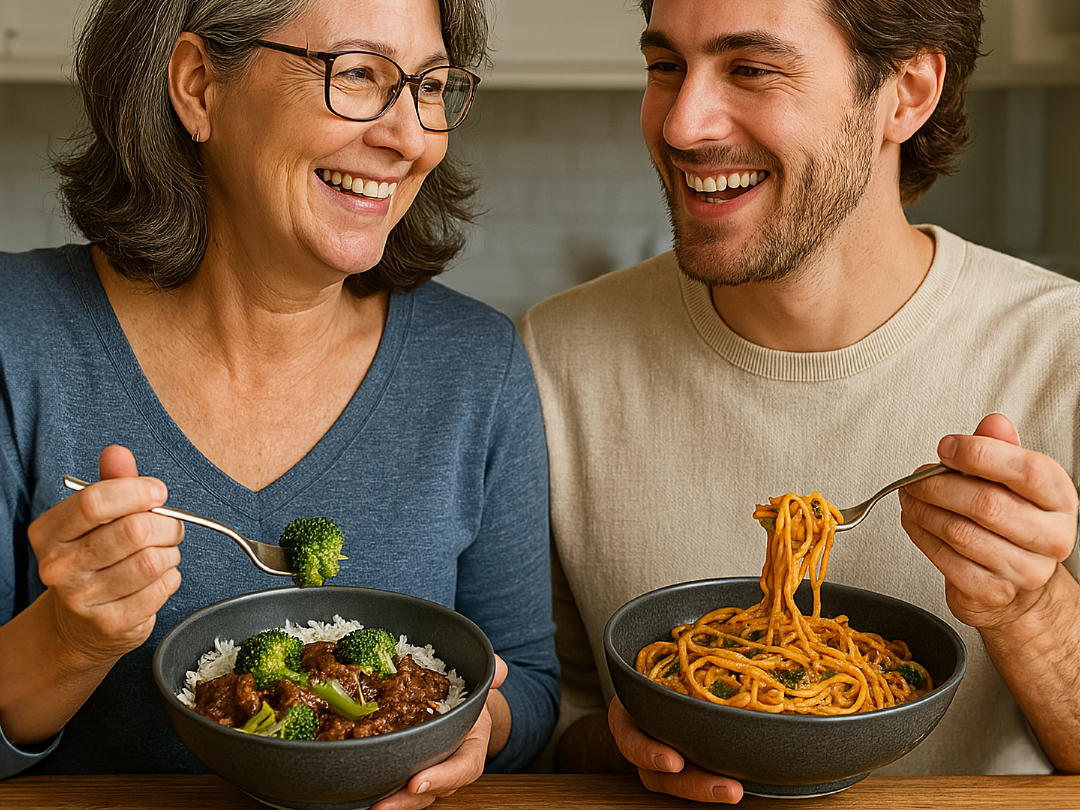
We’ve all been there—it’s the end of a long day, and the last thing you want to do is cook. The automatic response? Open a
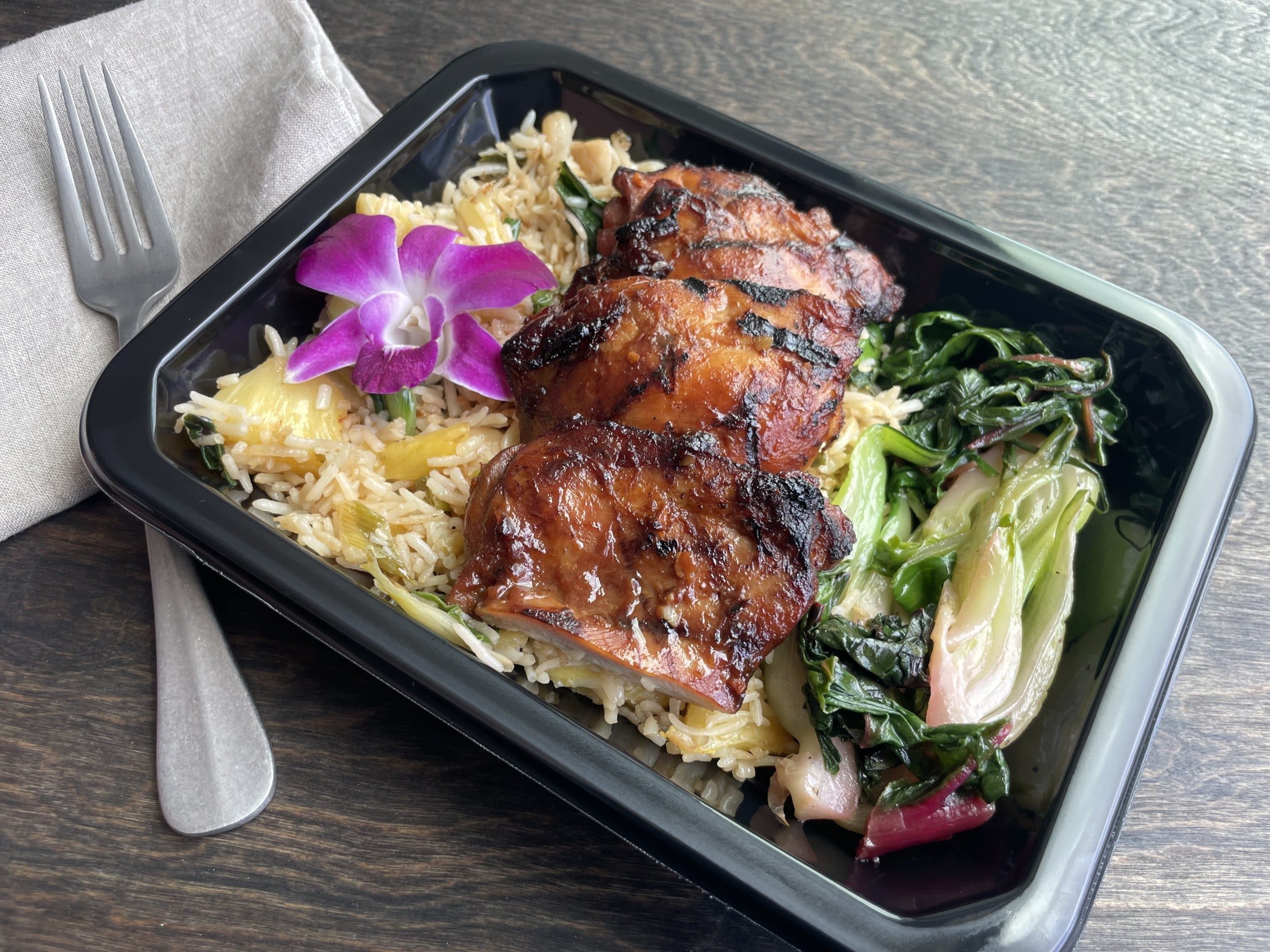
Summer just got here, and this heat already has us dreaming of a sweet island getaway. That’s why this month we turned to the beautiful
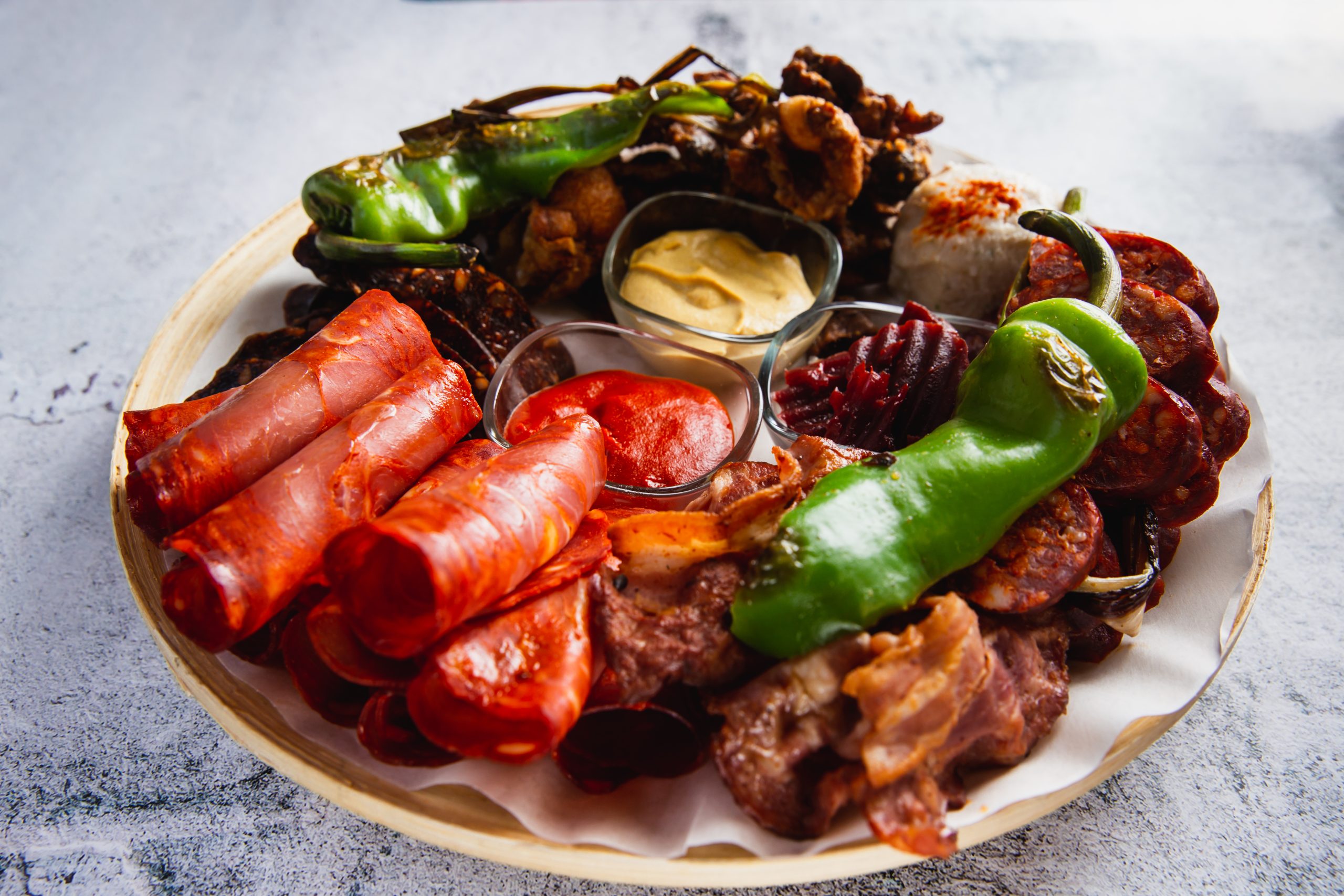
Check out how EatFlavorly utilizes Mexican meats and so many more in our scratch-made meals over at Our Menu! With Cinco de Mayo